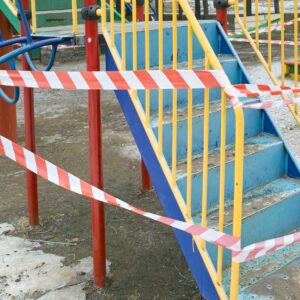
The number of reported traumatic brain injuries (TBIs) among children is on the rise. Injuries on monkey bars (28.3 percent of injuries) and swings (28.1 percent of injuries) account for a significant part of the recent increase. Researchers at the National Center for Injury Prevention and Control studied data from 2005 to 2013 and noticed an increase in TBI emergency department visits among children under age 14. TBIs were most commonly found in children ages 5 to 9, with boys accounting for nearly 59% of all TBIs.
So why the sudden increase in injuries? Are playgrounds more dangerous than they used to be? Researchers believe that there are two possible reasons. It could be that children are spending more time on the playground. It is also likely that parents are more aware of the risks of head injuries and are seeking medical attention at increased rates. Head injuries and TBIs have made news in recent years thanks to stories about professional football players who have sustained TBIs.
In 2005, the rate of TBIs among children was 23 out of 100,000 kids. By 2013, that number had more than doubled to 48 out of 100,000. In 2013, approximately 30,000 children were treated for TBI.
Of those who were taken to the emergency room following a head injury, 95% were treated in the ER and sent home. Only 3% were admitted to the hospital or transferred to another hospital for treatment.
21,101 children aged 14 or younger were treated in emergency departments for TBIs related to playgrounds from 2001-2013. 39.7 out of 100,000 boys visited emergency departments, and 53.9 children aged five to nine visited emergency departments.
TBIs are typically caused by a fall or a blow to the head. The brain jostles around inside the head and functions erratically. Common symptoms include dizziness, confusion, headaches and vomiting. These symptoms can last anywhere from several days to several weeks. In the majority of accidents, children suffer no long-lasting effects.
However, it’s important to understand that multiple blows to the head can lead to brain damage.
There are ways to make playgrounds safer and lower the rate of TBI. Soft ground surfaces – such as sand or wood chips – should be used instead of hard surfaces like concrete. Parents should check equipment before allowing children to use it. They should also supervise their children to help prevent serious accident. It’s also a good idea to follow safety signs posted at the playground. It’s also important to use age-appropriate equipment. Smaller children should avoid monkey bars and other advanced playground equipment.

